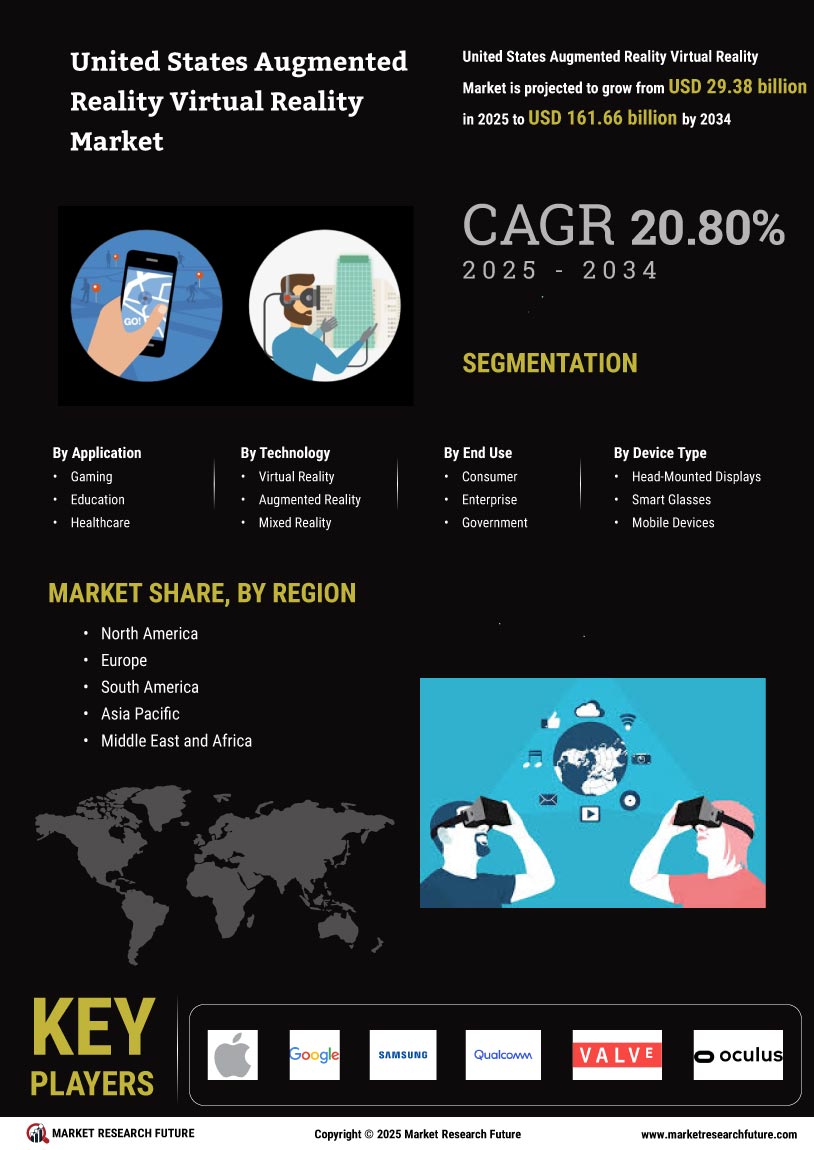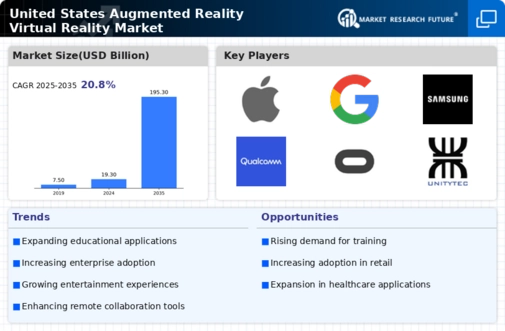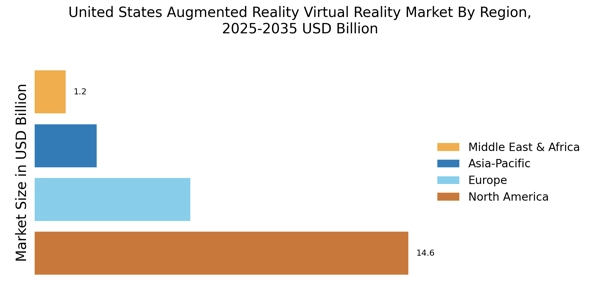Technological Advancements in Hardware
The augmented reality-virtual-reality market is experiencing a surge in technological advancements, particularly in hardware capabilities. Innovations in graphics processing units (GPUs) and display technologies are enhancing user experiences, making them more immersive and realistic. For instance, the introduction of high-resolution displays and lightweight headsets is likely to attract a broader audience. As of 2025, the market for AR/VR hardware is projected to reach approximately $30 billion, indicating a robust growth trajectory. This growth is driven by the increasing demand for high-quality visual experiences in gaming, education, and training sectors. Consequently, the augmented reality-virtual-reality market is poised for significant expansion as hardware continues to evolve, enabling more sophisticated applications and user engagement.
Increased Focus on Remote Collaboration
The augmented reality-virtual-reality market is witnessing a notable shift towards remote collaboration tools, particularly in the wake of evolving workplace dynamics. Companies are increasingly adopting AR/VR solutions to facilitate virtual meetings and collaborative projects, enhancing productivity and engagement among remote teams. This trend is supported by a growing recognition of the limitations of traditional video conferencing tools. As of 2025, the market for AR/VR collaboration tools is expected to grow by approximately 30%, reflecting the demand for more interactive and immersive communication methods. This shift not only enhances team collaboration but also reduces travel costs, making it a financially viable option for many organizations. Thus, the augmented reality-virtual-reality market is likely to benefit from this increasing focus on remote collaboration.
Rising Demand in Healthcare Applications
The healthcare sector is increasingly leveraging augmented reality and virtual reality technologies for various applications, including surgical training, patient education, and therapy. The augmented reality-virtual-reality market is projected to experience significant growth in this sector, with estimates indicating a potential increase of 20% in market share by 2026. AR/VR technologies are being utilized to create realistic simulations for medical professionals, allowing for enhanced training and skill development. Additionally, these technologies are being employed in therapeutic settings, providing patients with immersive experiences that can aid in pain management and rehabilitation. As healthcare providers continue to adopt these innovative solutions, the augmented reality-virtual-reality market is likely to expand, driven by the demand for improved patient outcomes and training methodologies.
Growing Adoption in Education and Training
The integration of augmented reality and virtual reality technologies in educational settings is becoming increasingly prevalent. Institutions are recognizing the potential of these technologies to enhance learning experiences through interactive simulations and immersive environments. The augmented reality-virtual-reality market is projected to see a substantial increase in adoption rates within educational institutions, with estimates suggesting a growth of over 25% in the next few years. This trend is particularly evident in fields such as medical training, where realistic simulations can significantly improve skill acquisition. As educational institutions invest in AR/VR solutions, the market is likely to expand, driven by the demand for innovative teaching methods and improved student engagement.
Expansion of Gaming and Entertainment Sectors
The gaming and entertainment industries are at the forefront of driving growth in the augmented reality-virtual-reality market. With the increasing popularity of immersive gaming experiences, developers are investing heavily in AR/VR technologies to create engaging content. The market for AR/VR gaming is expected to reach approximately $15 billion by 2025, reflecting a compound annual growth rate (CAGR) of around 30%. This growth is fueled by advancements in technology, which allow for more realistic graphics and interactive gameplay. Furthermore, the integration of AR/VR in entertainment, such as virtual concerts and interactive storytelling, is likely to attract a wider audience. As these sectors continue to innovate and expand, the augmented reality-virtual-reality market is poised for substantial growth.


















Leave a Comment